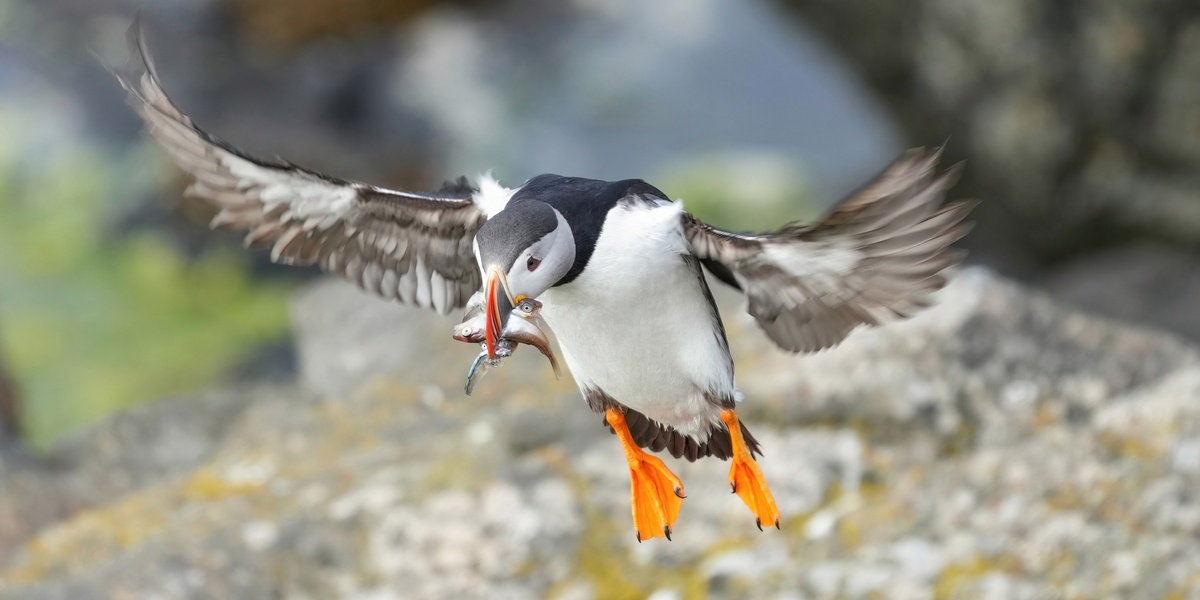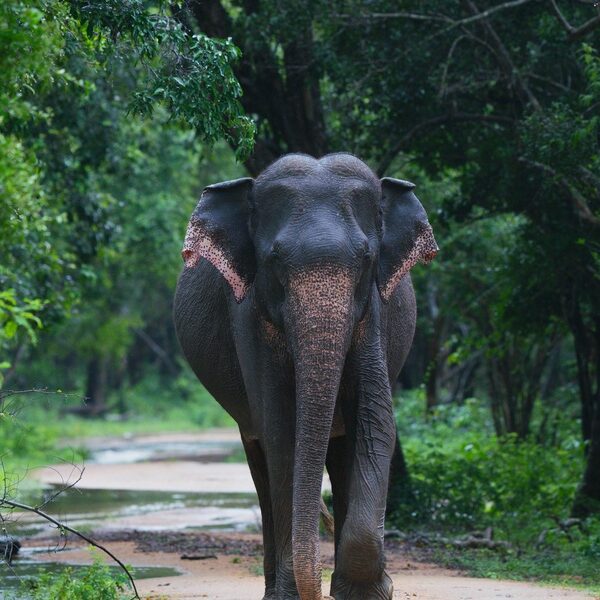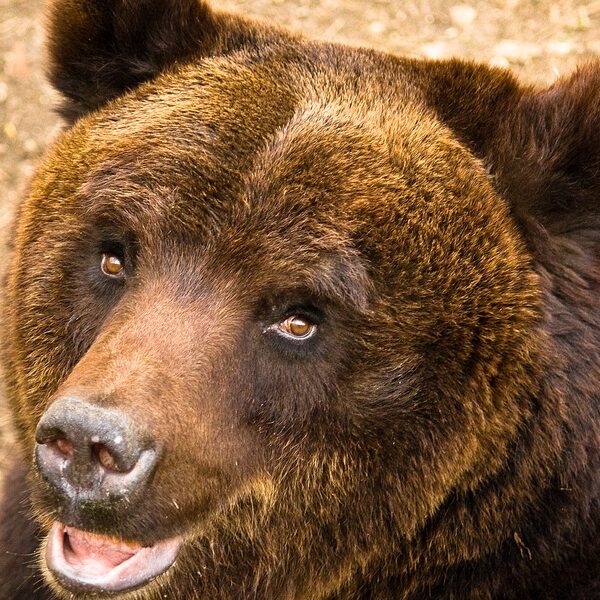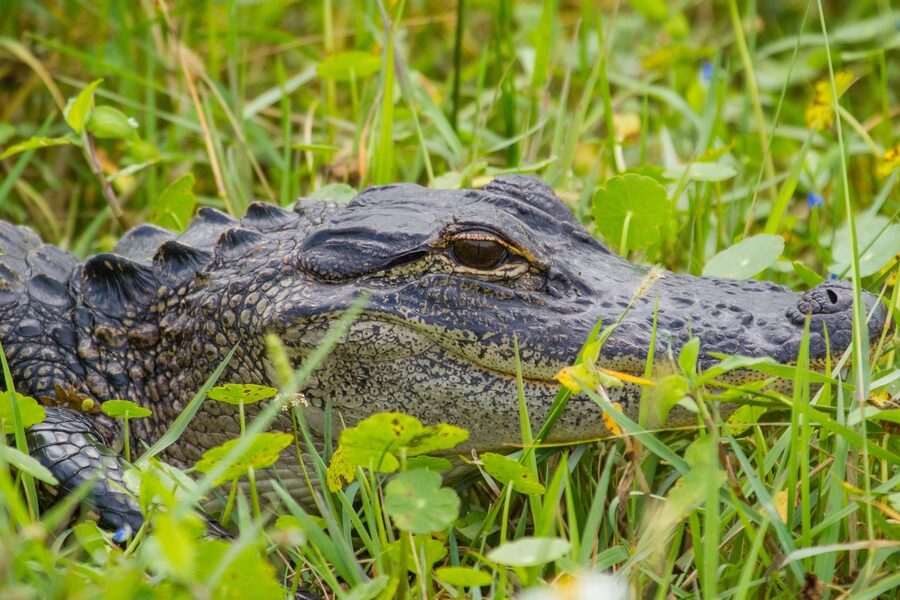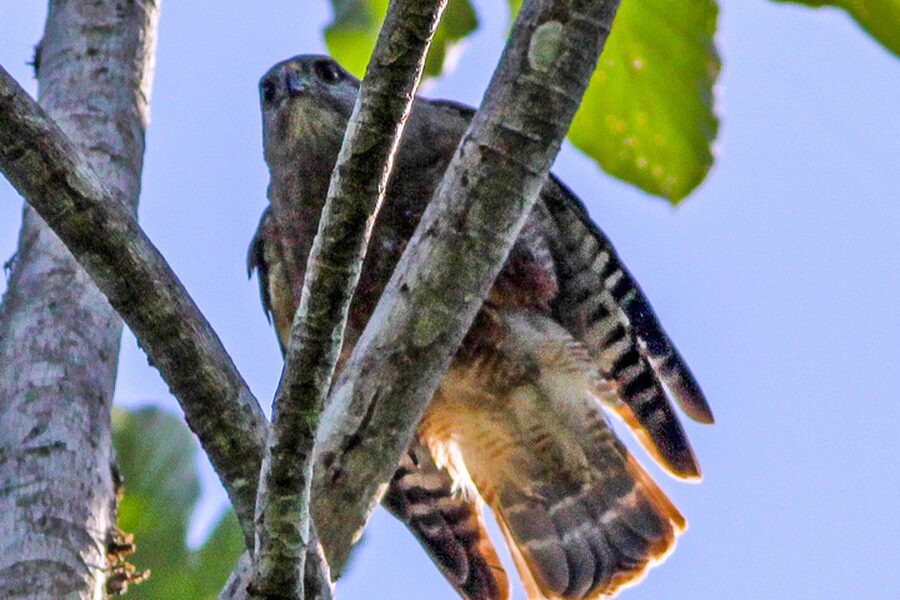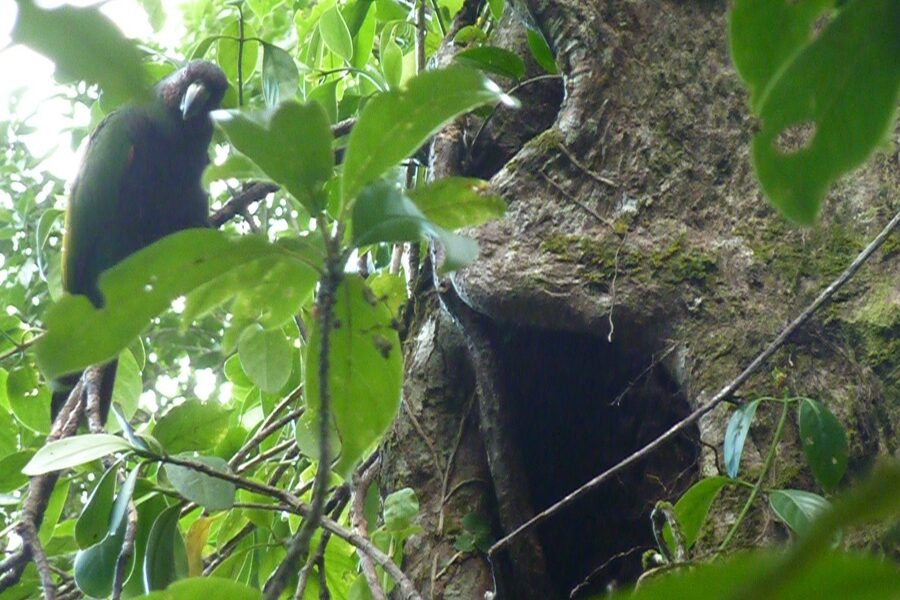Northern Ireland’s mix of rugged coast, rivers, bogs and small woodlands supports a surprising variety of wildlife. From coastal estuaries to quiet farmland hedgerows, this compact landscape is home to birds, mammals, fish and invertebrates that reflect both island and continental influences.
There are 86 Animals of Northern Ireland, ranging from Atlantic Salmon to Wren. For each species the list is organized with the columns Scientific name,Main habitat / Where found,Conservation status — clear, concise details you’ll find below.
Which species on the list are most at risk in Northern Ireland?
Look for species flagged as threatened in the Conservation status column; these often include migratory fish like Atlantic Salmon and ground-nesting birds affected by habitat loss. For up-to-date priorities, check DAERA guidance and IUCN or local conservation group assessments linked in many species accounts.
How can I increase my chances of seeing these animals in the wild?
Match species to habitat and season listed under Main habitat / Where found — wetlands and rivers for fish and waders, woodlands for songbirds, coastal cliffs for seabirds — then visit protected sites or join guided walks run by local wildlife trusts and bird clubs; use hides, binoculars and quiet observation to avoid disturbing wildlife.
Animals of Northern Ireland
| Name | Scientific name | Main habitat / Where found | Conservation status |
|---|---|---|---|
| Red Squirrel | Sciurus vulgaris | Coniferous and mixed woodlands; Tollymore, Glenariff, Mount Stewart | NI Priority Species; Near Threatened due to grey squirrel competition |
| Pine Marten | Martes martes | Woodlands and scrub, increasingly in farmland; widespread but elusive | NI Priority Species; fully protected |
| Irish Hare | Lepus timidus hibernicus | Uplands, pasture and coastal grasslands; Rathlin Island, Antrim Hills | NI Priority Species; endemic Irish subspecies |
| Otter | Lutra lutra | Rivers, lakes, and coasts; Lough Neagh, Strangford Lough, River Bann | NI Priority Species; European Protected Species |
| Badger | Meles meles | Woodlands, farmland, and suburban areas with well-drained soil | Protected under the Wildlife (NI) Order 1985 |
| Hedgehog | Erinaceus europaeus | Gardens, parks, farmland, and woodlands; widespread in suitable habitat | Vulnerable to extinction in Great Britain & Ireland |
| Common Pipistrelle | Pipistrellus pipistrellus | Widespread in towns, farmland, and woodlands near water | NI Priority Species; European Protected Species |
| Red Deer | Cervus elaphus | Upland forests and moorland; confined to a few managed herds | Locally common in specific areas like a herd in County Tyrone |
| Harbour Seal | Phoca vitulina | Sheltered coasts, estuaries, and sandbanks; Strangford Lough, Dundrum Bay | Protected marine mammal |
| Grey Seal | Halichoerus grypus | Exposed rocky coasts and remote islands; Rathlin Island, the Ards Peninsula | Protected marine mammal |
| Pygmy Shrew | Sorex minutus | Widespread in grassland, woodland, and hedgerows | Least Concern; Ireland’s smallest mammal |
| Puffin | Fratercula arctica | Coastal cliffs and islands for breeding; Rathlin Island seabird colony | Amber-listed bird of conservation concern in Ireland |
| Gannet | Morus bassanus | Nests on steep sea cliffs; Muck Island, an extension of the Ailsa Craig colony | Amber-listed bird of conservation concern in Ireland |
| Manx Shearwater | Puffinus puffinus | Breeds in burrows on offshore islands; Copeland Islands | Amber-listed bird of conservation concern in Ireland |
| Light-bellied Brent Goose | Branta hrota | Coastal estuaries and mudflats; Strangford Lough, Lough Foyle | Green-listed bird; nearly the entire world population winters in Ireland |
| Red Kite | Milvus milvus | Farmland with scattered woodland; County Down reintroduction area | Amber-listed; successfully reintroduced after persecution to extinction |
| Hen Harrier | Circus cyaneus | Upland moorland and young forestry plantations; Antrim Hills, Sperrins | Red-listed; one of Northern Ireland’s rarest breeding birds of prey |
| Barn Owl | Tyto alba | Lowland farmland with rough grassland and suitable nest sites | Amber-listed; population has declined significantly |
| Kingfisher | Alcedo atthis | Clean, slow-flowing rivers and streams; River Lagan, Quoile River | Amber-listed bird of conservation concern in Ireland |
| Dipper | Cinclus cinclus | Fast-flowing, clear upland rivers; Shimna River, Glenariff River | Amber-listed bird of conservation concern in Ireland |
| Curlew | Numenius arquata | Breeds on bogs and rushes; winters on estuaries. Lough Erne, Antrim Hills | Red-listed; critically endangered breeding population in NI |
| Corncrake | Crex crex | Tall meadows and hayfields; Rathlin Island, Lough Erne islands | Red-listed; extremely rare, subject to intensive conservation efforts |
| Peregrine Falcon | Falco peregrinus | Coastal cliffs, quarries, and increasingly cities; Mourne Mountains, Belfast | Green-listed; fully protected by law |
| Buzzard | Buteo buteo | Widespread in farmland, woodland, and hills | Green-listed; NI’s most common bird of prey |
| Goldcrest | Regulus regulus | Coniferous and mixed woodlands, parks, and gardens | Green-listed; Ireland’s smallest bird |
| Robin | Erithacus rubecula | Widespread in gardens, woodlands, and parks | Green-listed; one of NI’s most familiar birds |
| Wren | Troglodytes troglodytes | Almost any habitat with cover, from gardens to sea cliffs | Green-listed; one of NI’s most common birds |
| Eider | Somateria mollissima | Coasts and islands; Strangford Lough, Rathlin Island | Amber-listed due to localised populations |
| Common Lizard | Zootoca vivipara | Moorland, bogs, sand dunes, and railway embankments; Peatlands Park | Protected under the Wildlife (NI) Order 1985; NI’s only native reptile |
| Slow Worm | Anguis fragilis | Gardens, rough grassland, and heathland; localised introduced populations | Protected; a non-native species in NI with established colonies |
| Common Frog | Rana temporaria | Ponds, ditches, and damp grassland; widespread | Protected under the Wildlife (NI) Order 1985 |
| Smooth Newt | Lissotriton vulgaris | Ponds, ditches, and lakes for breeding; widespread | Protected under the Wildlife (NI) Order 1985 |
| Atlantic Salmon | Salmo salar | Clean, fast-flowing rivers for breeding, sea for adult life; River Bush, River Mourne | NI Priority Species; populations are under pressure |
| Brown Trout | Salmo trutta | Widespread in rivers and lakes; Lough Neagh, Lough Erne | Locally common but sensitive to pollution |
| European Eel | Anguilla anguilla | Rivers and lakes, especially Lough Neagh | Critically Endangered (IUCN); NI Priority Species |
| Pollan | Coregonus pollan | Freshwater lakes; Lough Neagh, Lower Lough Erne | Vulnerable; NI Priority Species. Found only in a few Irish loughs |
| Basking Shark | Cetorhinus maximus | Coastal waters, often seen near the surface in summer; North Coast | Vulnerable (IUCN); protected species |
| Pike | Esox lucius | Slow-flowing rivers, canals, and lakes; Lough Erne system | Non-native, widespread predator |
| Thornback Ray | Raja clavata | Seabed in coastal waters; Strangford Lough, North Coast | Near Threatened (IUCN) |
| Marsh Fritillary | Euphydryas aurinia | Damp, unimproved grasslands and fens; Ballynahone Bog, Peatlands Park | NI Priority Species; European protected species |
| Cryptic Wood White | Leptidea juvernica | Sheltered, scrubby grassland and woodland edges; widespread in Fermanagh | NI Priority Species |
| Irish Damselfly | Coenagrion lunulatum | Shallow, acidic pools in bogs and fens; largely confined to west NI | NI Priority Species; very rare |
| Freshwater Pearl Mussel | Margaritifera margaritifera | Clean, fast-flowing rivers; Ballinderry and Owenkillew Rivers | Critically Endangered; NI Priority Species. Can live for over 100 years. |
| Common Carder Bee | Bombus pascuorum | Gardens, grasslands, and hedgerows; very common and widespread | Least Concern |
| Emperor Moth | Saturnia pavonia | Heathland, moorland, and bogs; widespread in suitable habitat | Locally common |
| Green Tiger Beetle | Cicindela campestris | Heathland, sand dunes, and bare peaty ground with sunny aspects | Locally common but populations can be isolated |
| Common Starfish | Asterias rubens | Seashores and seabeds, from rockpools to deep water | Common and widespread |
| Lion’s Mane Jellyfish | Cyanea capillata | Coastal waters, especially in late summer | Seasonal; can occur in large blooms. Stings are painful. |
| Harbour Porpoise | Phocoena phocoena | Coastal waters, often seen from headlands; Ramore Head, Rathlin Sound | Protected marine mammal |
| Bank Vole | Myodes glareolus | Woodlands, hedgerows, and dense vegetation; widespread | Least Concern; a 20th-century arrival in Ireland |
| Field Mouse | Apodemus sylvaticus | Widespread in woodland, grassland, and gardens; very common | Least Concern; also known as the long-tailed field mouse |
| Starling | Sturnus vulgaris | Farmland, towns, and cities; widespread and common | Amber-listed due to recent declines in breeding populations |
| Blackbird | Turdus merula | Gardens, parks, and woodlands; one of NI’s most common birds | Green-listed; a familiar garden resident |
| Chaffinch | Fringilla coelebs | Woodlands, parks, and gardens; very common and widespread | Green-listed |
| Blue Tit | Cyanistes caeruleus | Woodlands, parks, and gardens; common visitor to bird feeders | Green-listed |
| Goldfinch | Carduelis carduelis | Gardens, wasteland, and open country with thistles and teasels | Green-listed; population has increased in recent decades |
| Swallow | Hirundo rustica | Farmland and open country, often near buildings; summer migrant | Amber-listed due to population fluctuations |
| Swift | Apus apus | Aerial, nests in roof spaces of old buildings in towns and cities; summer migrant | Red-listed due to severe population declines |
| Lapwing | Vanellus vanellus | Breeds on damp grassland and wetlands; Lough Beg, Lough Erne | Red-listed; severe declines in breeding numbers |
| Oystercatcher | Haematopus ostralegus | Coasts, estuaries, and increasingly inland gravel pits and fields | Amber-listed bird of conservation concern |
| Skylark | Alauda arvensis | Open farmland, moorland, and coastal grasslands | Red-listed due to severe declines from changing farm practices |
| Stonechat | Saxicola rubicola | Heath, gorse scrub, and coastal areas; Murlough NNR, Antrim Coast | Green-listed; a resident chat species |
| Cuckoo | Cuculus canorus | Moorland, woodland edges, and farmland; summer migrant | Red-listed due to population declines |
| Sparrowhawk | Accipiter nisus | Woodlands and increasingly gardens and urban areas | Green-listed |
| Mute Swan | Cygnus olor | Lowland lakes, rivers, and urban parks; widespread resident | Green-listed |
| Whooper Swan | Cygnus cygnus | Flooded fields and lakes; Lough Neagh, Lough Foyle; winter visitor | Amber-listed |
| Guillemot | Uria aalge | Breeds on sheer sea cliffs; Rathlin Island, The Gobbins | Amber-listed bird of conservation concern |
| Razorbill | Alca torda | Nests on sea cliff ledges and in crevices; Rathlin Island | Amber-listed bird of conservation concern |
| Fulmar | Fulmarus glacialis | Nests on sea cliffs, quarries, and even buildings | Amber-listed bird of conservation concern |
| Cormorant | Phalacrocorax carbo | Coasts and large inland waters; widespread | Green-listed |
| Emperor Dragonfly | Anax imperator | Well-vegetated ponds, lakes, and slow-flowing canals | Locally common in suitable habitat |
| Holly Blue | Celastrina argiolus | Woodlands, parks, and gardens with Holly and Ivy | Widespread and common |
| Peacock Butterfly | Aglais io | Gardens, woodlands, and grasslands; widespread | Common |
| Red Admiral | Vanessa atalanta | Found in almost any habitat; widespread immigrant, now overwinters | Common |
| Devil’s Coach Horse Beetle | Ocypus olens | Gardens, woodlands, and grasslands, often under logs or stones | Common |
| Common Jellyfish | Aurelia aurita | Coastal waters, often washed ashore | Common and widespread |
| Common Prawn | Palaemon serratus | Rockpools and shallow coastal waters | Common |
| Garden Snail | Cornu aspersum | Gardens, parks, and disturbed ground; very common | Very common |
| Irish Black Bee | Apis mellifera mellifera | Widespread, managed and wild colonies | Native subspecies, conservation focus to maintain pure strains |
| Sika Deer | Cervus nippon | Woodlands, heathland, and farmland; Fermanagh, Tyrone | Non-native, established in the wild |
| Fallow Deer | Dama dama | Mature, mixed woodland and parkland; many managed herds e.g. Baronscort | Non-native, widely established since Norman times |
| Kestrel | Falco tinnunculus | Open country, farmland, and even urban areas | Amber-listed due to historical declines |
| Long-eared Owl | Asio otus | Coniferous forests and dense scrub | Green-listed, but secretive and likely under-recorded |
| Snipe | Gallinago gallinago | Wet grasslands, marshes, and moorlands | Amber-listed due to habitat loss |
| Redshank | Tringa totanus | Coastal mudflats in winter; breeds on damp grasslands | Amber-listed; declining as a breeding species |
| Three-spined Stickleback | Gasterosteus aculeatus | Ponds, streams, and rockpools; extremely common | Least Concern |
Images and Descriptions
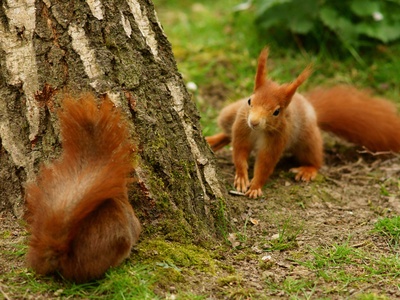
Red Squirrel
A small, russet-red squirrel with distinctive ear tufts, best seen in early morning. They build twig nests called dreys and, unlike grey squirrels, they cannot digest acorns easily.
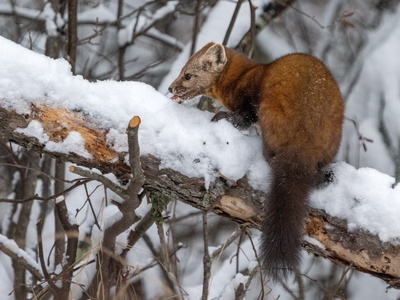
Pine Marten
A cat-sized, slender mammal with rich brown fur and a creamy-yellow throat patch. This agile climber is mostly nocturnal, hunting small mammals and birds. Its recovery is helping control grey squirrel numbers.
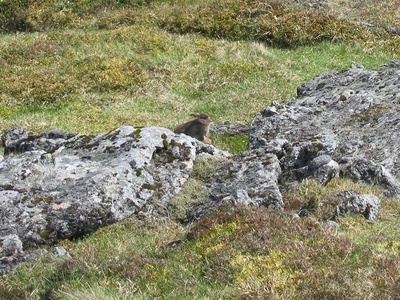
Irish Hare
Larger than a rabbit with long, black-tipped ears. Famous for its speed and ‘boxing’ behaviour in spring. Unlike rabbits, hares don’t burrow, instead resting in shallow depressions called ‘forms’.
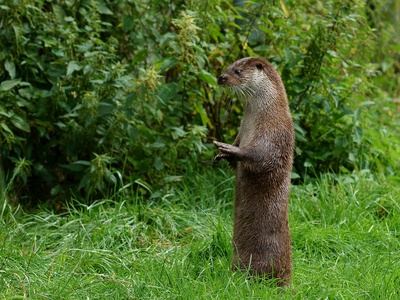
Otter
A sleek, powerful swimmer with dense brown fur and a broad, whiskered snout. Mainly active at dawn and dusk, they leave distinctive five-toed tracks and fish-scented droppings called ‘spraints’.
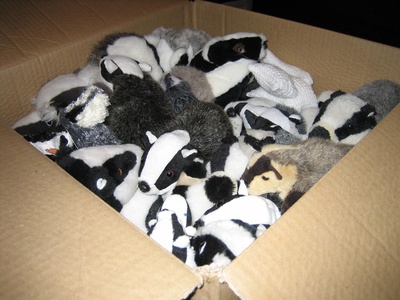
Badger
An unmistakable black-and-white striped mammal, living in social groups in underground burrows called setts. Nocturnal and shy, you might spot one foraging for earthworms on damp nights.
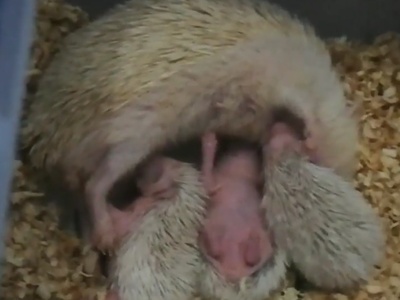
Hedgehog
A small, spiny mammal that rolls into a tight ball for defence. Listen for them snuffling through gardens at night, hunting for slugs and beetles. They hibernate through the winter months.
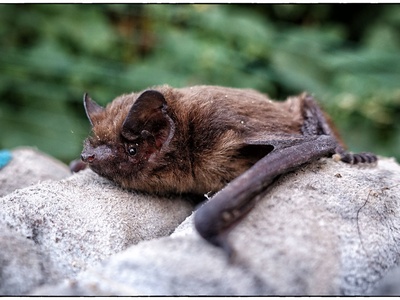
Common Pipistrelle
Northern Ireland’s smallest and most common bat. It emerges at dusk to hunt tiny insects, eating up to 3,000 a night. You can often see them flitting around streetlights and in gardens.
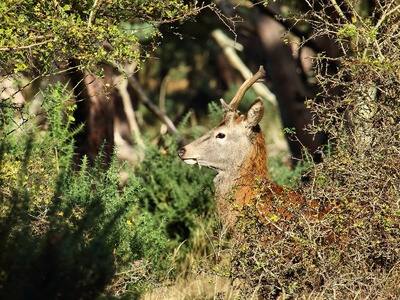
Red Deer
Northern Ireland’s largest land mammal, with stags sporting impressive antlers. Best known for the autumn ‘rut’, when stags roar and clash antlers to compete for females.
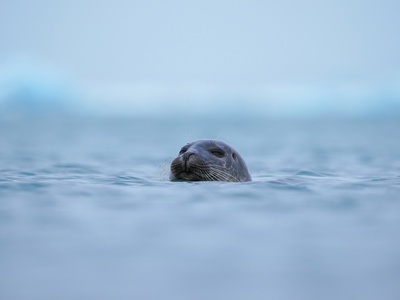
Harbour Seal
Also known as the Common Seal, this species has a dog-like head and spotted coat. They often haul out on rocks or sandbanks at low tide. Pups are born in summer and can swim almost immediately.
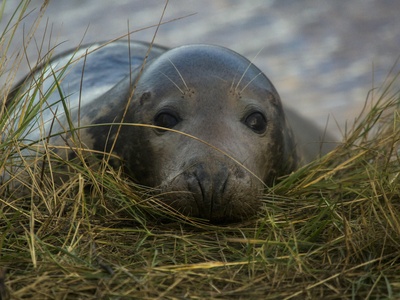
Grey Seal
Larger than the Harbour Seal with a long, ‘Roman’ nose profile. They are powerful swimmers and divers. Pups, born in autumn with white coats, remain on land for several weeks before molting.
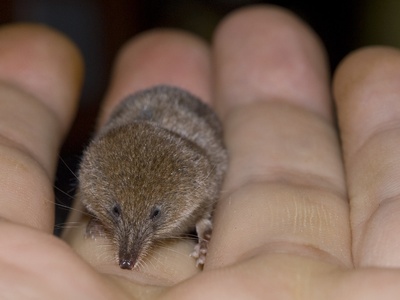
Pygmy Shrew
A tiny, hyperactive mammal with a long snout and velvety fur. It must eat almost constantly (up to 1.25 times its body weight daily) to survive and has a venomous bite to subdue prey.
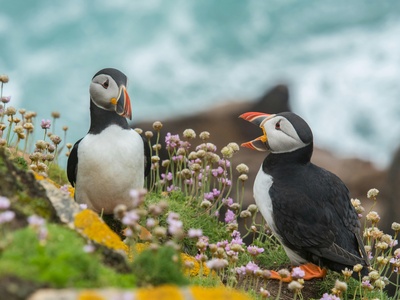
Puffin
An unmistakable seabird with a clown-like face and brightly coloured bill in summer. See them from April to July at their breeding colonies. They spend the rest of the year out at sea.
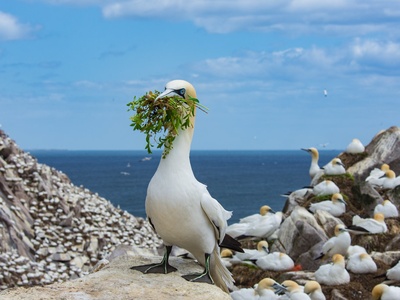
Gannet
A large, powerful seabird with brilliant white plumage, black wingtips, and a yellow-tinged head. Famous for its spectacular plunge-dives, hitting the water at speeds up to 60 mph to catch fish.
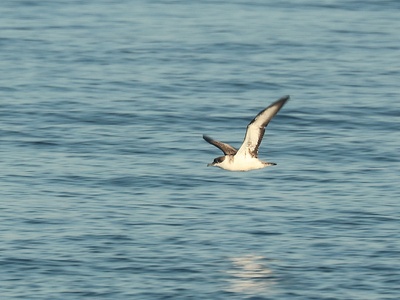
Manx Shearwater
A medium-sized seabird, black above and white below, that flies with a distinctive shearing motion low over the waves. Nocturnal at its breeding colonies, it utters eerie, cackling calls.
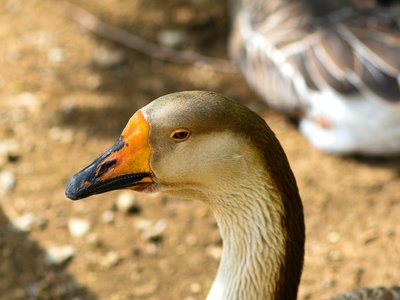
Light-bellied Brent Goose
A small, dark goose that migrates from Arctic Canada to winter in Ireland. Strangford Lough is a globally important site where you can see thousands feeding on eelgrass from autumn to spring.
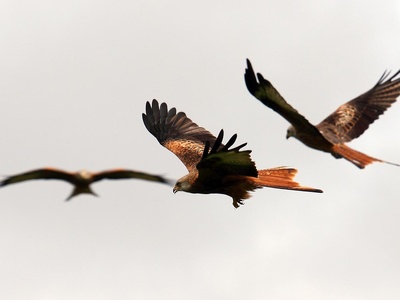
Red Kite
A large, graceful bird of prey with a reddish-brown body, angled wings, and a deeply forked tail. Reintroduced to County Down, they can be seen soaring effortlessly on thermal updrafts.
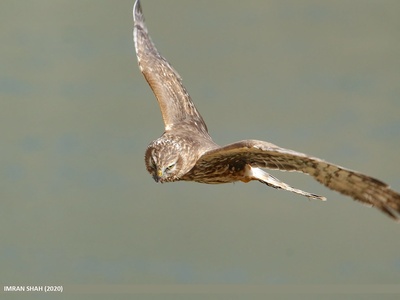
Hen Harrier
A slender, graceful raptor. The male is pale grey (‘ghost-like’), while the female is brown and streaked. They fly low over the ground, hunting small birds and mammals with a distinctive V-shaped wing profile.
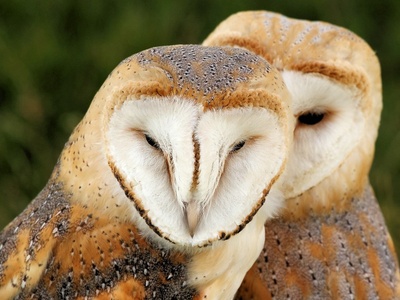
Barn Owl
A ghostly, pale owl with a heart-shaped face and silent flight. Strictly nocturnal, it hunts small mammals over open countryside. Listen for its eerie screeching calls on still nights.
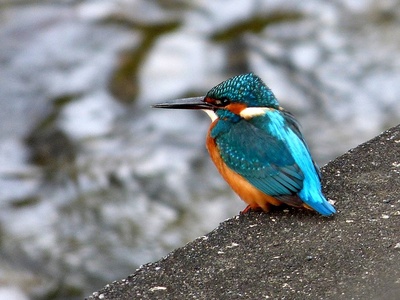
Kingfisher
A small, brilliantly coloured bird with iridescent blue and bright orange plumage. Often seen as a flash of colour as it flies low over the water before diving to catch small fish.
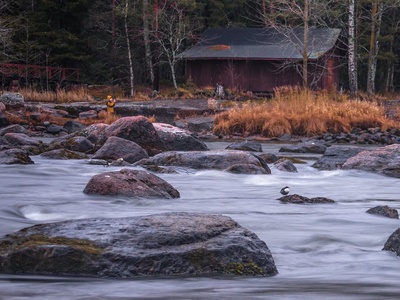
Dipper
A stocky, dark bird with a white throat and chest. Unique among songbirds for its ability to walk underwater on the riverbed, hunting for aquatic insects. Look for it bobbing on rocks in the current.
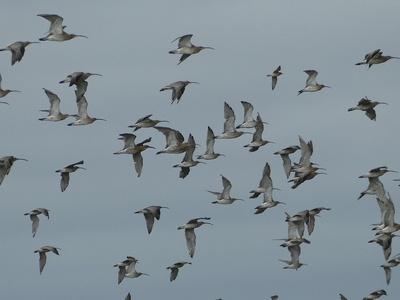
Curlew
A large, mottled brown wader with very long legs and a distinctive, long down-curved bill. Its haunting, bubbling ‘cur-lee’ call is one of the most evocative sounds of the uplands and coast.
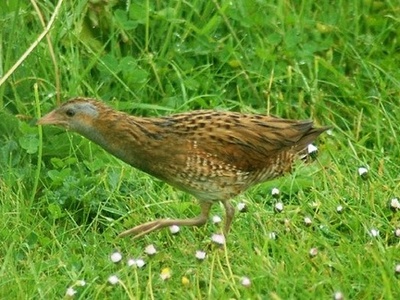
Corncrake
A secretive, quail-sized bird, heard more often than seen. Its loud, rasping ‘crex-crex’ call, usually heard at night, was once a common sound of summer but is now incredibly rare.
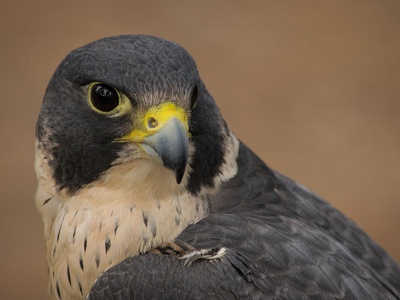
Peregrine Falcon
A powerful, stocky falcon renowned for being the fastest animal on the planet, reaching over 200 mph in a hunting dive. Look for it soaring high or perching on cliff ledges and tall buildings.
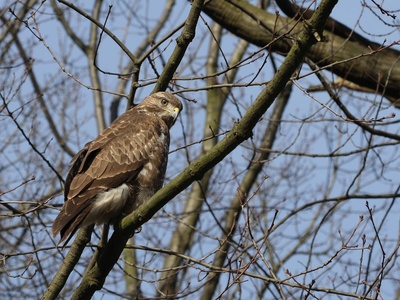
Buzzard
A medium-to-large raptor, usually seen soaring in circles high in the sky on broad wings, with a distinctive ‘mewing’ call. Its plumage is very variable, from dark brown to almost white.
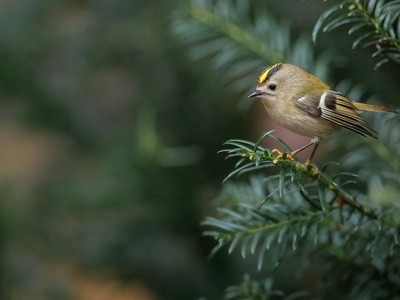
Goldcrest
A tiny, olive-green bird with a bright orange or yellow crest, often seen flitting restlessly through the canopy. Despite its minuscule size (weighing the same as a 20p coin), it’s a resident year-round.
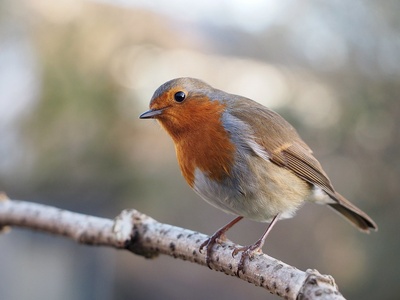
Robin
A small, plump bird with a bright red breast, famous for its territorial nature and melodic song. Both males and females hold territories and sing throughout the winter to defend them.
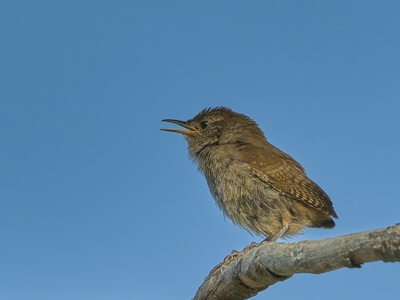
Wren
A tiny, hyperactive brown bird, often seen with its short tail cocked. It has a surprisingly loud and complex song. In cold weather, dozens of wrens may huddle together in a single nest box to keep warm.
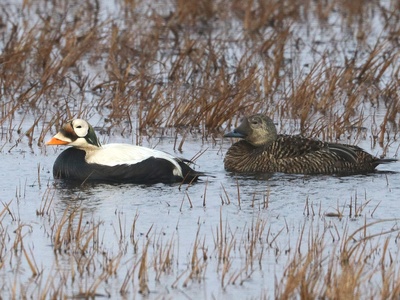
Eider
A large, heavy sea duck. The male is striking black and white with a pale green nape, while the female is mottled brown. Famous for its incredibly insulating ‘eiderdown’, which females use to line their nests.
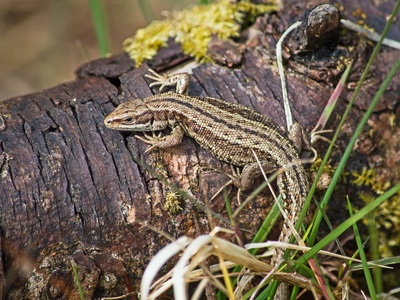
Common Lizard
A small, fast-moving lizard, often seen basking in sunny spots. To escape predators, it can shed its tail, which continues to wriggle as a distraction. It gives birth to live young.
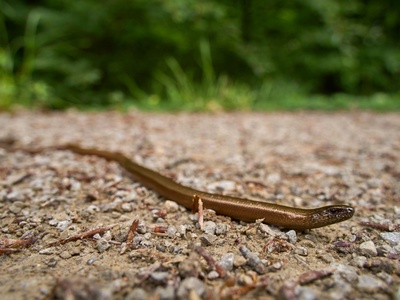
Slow Worm
A legless lizard, not a snake, often mistaken for one. It has smooth, shiny skin, eyelids (which snakes lack), and a blunt tail. They are harmless and feed on slugs and worms.
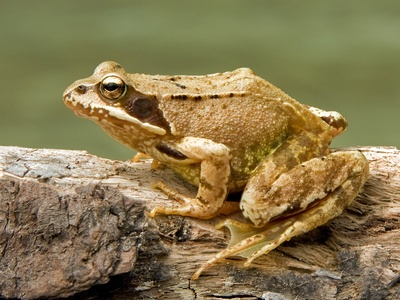
Common Frog
Northern Ireland’s only native frog, with smooth skin and long hind legs for jumping. Adults return to ponds to breed in spring, laying clumps of spawn. They breathe through their skin as well as their lungs.
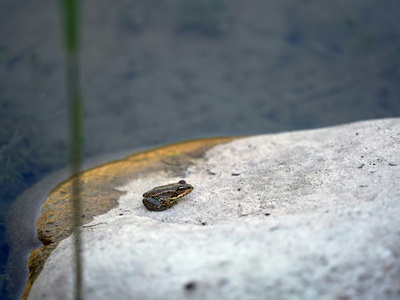
Smooth Newt
A small amphibian resembling a lizard, with smooth or slightly velvety skin. The male develops a wavy crest along his back during the breeding season. They feed on insects, worms, and tadpoles.
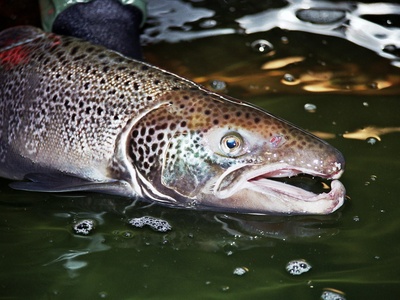
Atlantic Salmon
An iconic fish known for its incredible life cycle, migrating from freshwater rivers to the sea to feed and grow, before making the epic journey back to its home river to spawn.
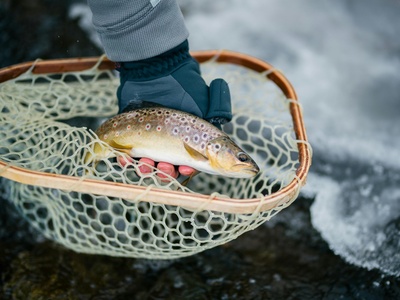
Brown Trout
A beautiful fish with variable spot patterns, from silver in large lakes (ferox trout) to dark brown in peaty streams. The same species as the Sea Trout, which migrates to the sea to feed.
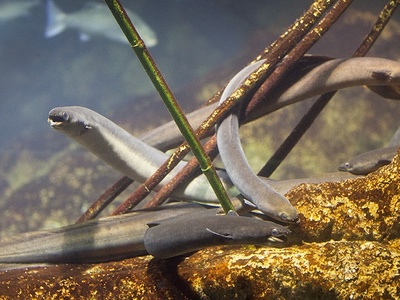
European Eel
A long, snake-like fish with a remarkable life cycle. It starts life as a larva in the Sargasso Sea, travels across the Atlantic to our rivers, and returns to the sea to breed decades later.
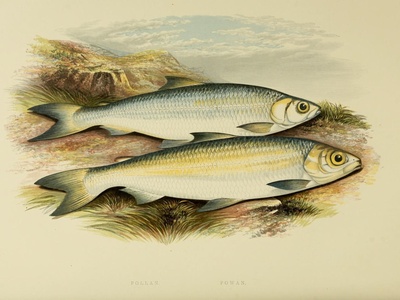
Pollan
A freshwater whitefish, a relic of the ice age, found nowhere else in Western Europe. It lives in cold, deep water, feeding on small crustaceans. Lough Neagh holds the most significant population.
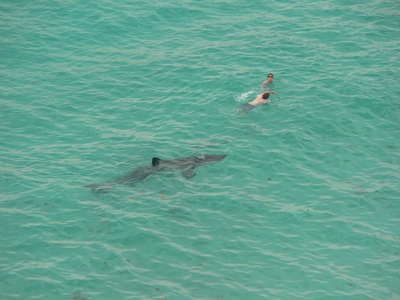
Basking Shark
The world’s second-largest fish, a gentle giant that filter-feeds on plankton. Can be seen between May and September, often ‘basking’ with its dorsal fin and tail tip visible above the water.
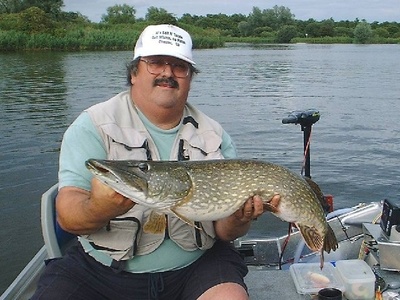
Pike
A large, predatory freshwater fish with a long, streamlined body, a duck-billed snout, and a mouth full of sharp teeth. An ambush predator, it lies in wait in weedy areas for smaller fish.
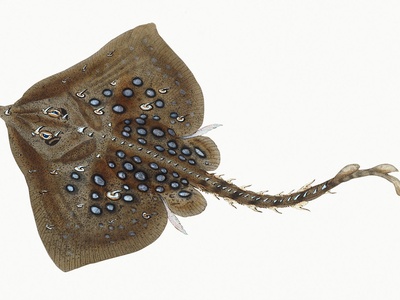
Thornback Ray
A diamond-shaped cartilaginous fish, part of the skate family. It has a thorny upper surface for defence and lives on the seabed hunting crabs and flatfish. Its egg cases are known as ‘mermaid’s purses’.
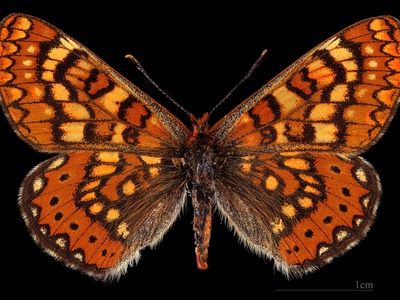
Marsh Fritillary
A medium-sized butterfly with a striking orange, yellow, and brown chequerboard pattern. The caterpillars live in communal silken webs on their food plant, Devil’s-bit Scabious.
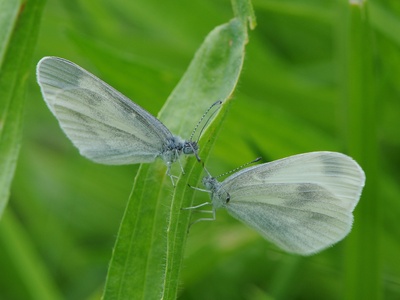
Cryptic Wood White
A small, delicate white butterfly with a slow, gentle flight pattern. It was only recently distinguished from other European wood white species through genetic analysis, making it a special Irish species.
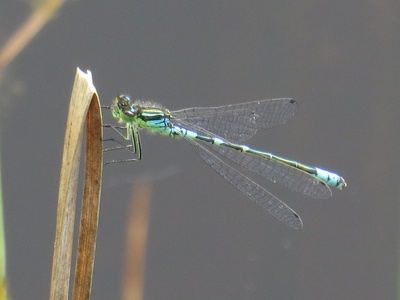
Irish Damselfly
A small, delicate damselfly. The male is blue and black, distinguished by a unique ‘trident’ or ‘goblet’ mark on its second abdominal segment. Northern Ireland is a UK stronghold for this rare species.
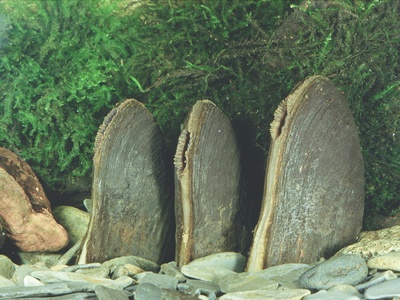
Freshwater Pearl Mussel
A large freshwater bivalve that lives partially buried in riverbeds. It requires exceptionally clean water and healthy salmon/trout populations, as its larvae attach to their gills to disperse.
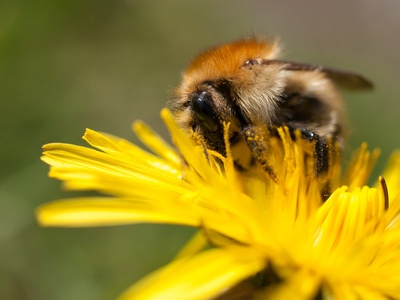
Common Carder Bee
A fluffy, ginger-brown bumblebee often seen ‘carding’ or teasing out fibres to make its nest. It’s a common sight in gardens throughout the summer, visiting a wide variety of flowers.
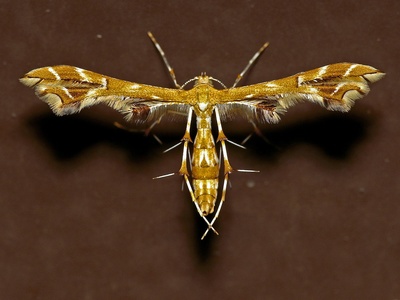
Emperor Moth
Northern Ireland’s largest native moth, with a wingspan up to 8 cm. The male flies rapidly by day in search of females, which are nocturnal. Both sexes have striking eyespots on their wings.
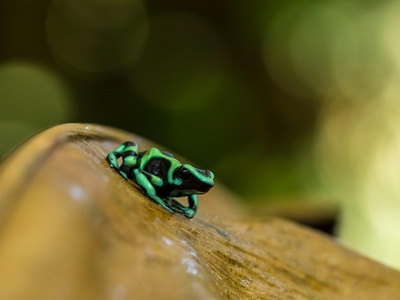
Green Tiger Beetle
A striking, metallic-green predatory beetle with powerful legs. It runs and flies rapidly in sunshine, hunting other insects. Its large, curved jaws make it a fearsome hunter for its size.
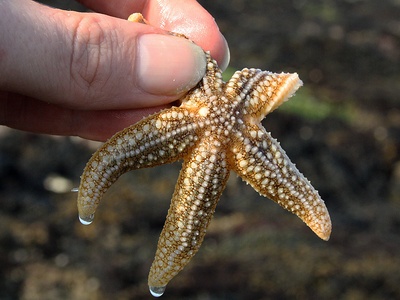
Common Starfish
The classic five-armed starfish, typically orange or brownish but can be purple. It feeds on mussels and other bivalves by forcing their shells open with its tube feet and everting its stomach.
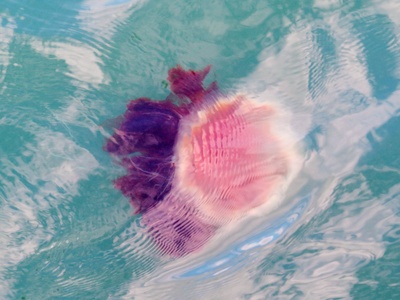
Lion’s Mane Jellyfish
The world’s largest species of jellyfish. Its bell can reach over 1 metre, with a huge trailing mass of fine tentacles. They are common in the Irish Sea and can give a nasty sting, even when washed up.
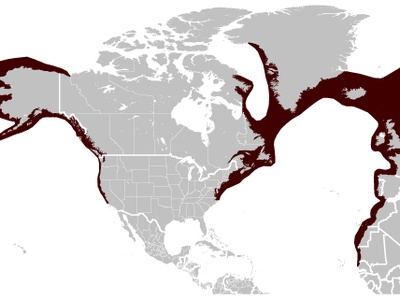
Harbour Porpoise
Northern Ireland’s smallest and most common cetacean. Shy and difficult to spot, they are usually seen alone or in small groups, revealing only a small, triangular dorsal fin as they surface briefly to breathe.
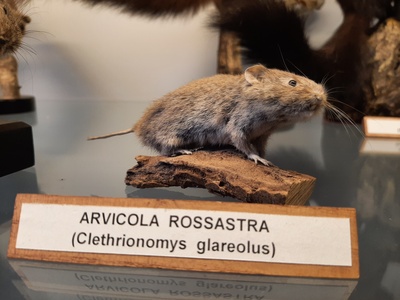
Bank Vole
A small rodent with reddish-brown fur, a blunt nose, and a shorter tail than a mouse. An agile climber, it feeds on seeds, fruit, and green plants. Introduced to Ireland, it is now widespread.
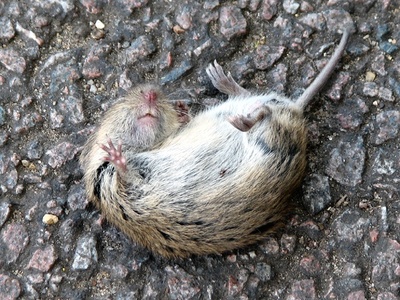
Field Mouse
A small, sandy-brown mouse with large ears, big black eyes, and a long tail. A fantastic jumper, it is nocturnal and forages for seeds, nuts, and insects on the ground.
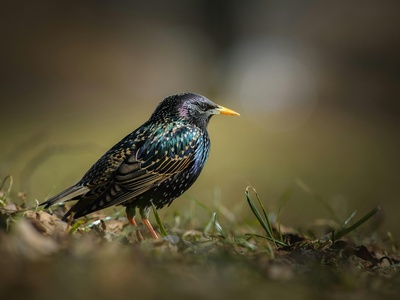
Starling
A noisy, gregarious bird with glossy, iridescent black plumage that is speckled in winter. Famous for forming huge, swirling pre-roost flocks called ‘murmurations’ in autumn and winter.
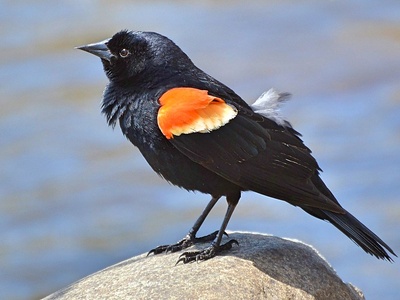
Blackbird
The male is a glossy black bird with a bright orange-yellow beak and eye-ring. The female is dark brown. Renowned for its beautiful, flute-like song, often delivered from a high perch.
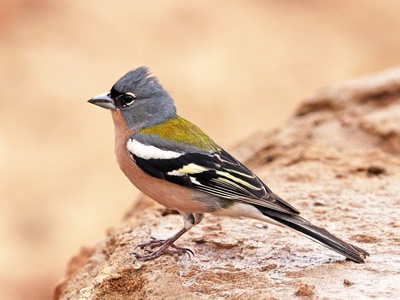
Chaffinch
One of our most common finches. The male is colourful with a blue-grey head, pinkish breast, and prominent white wing bars. The female is a more subdued olive-brown. Has a loud, rattling song.
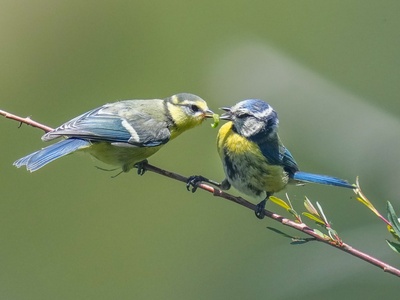
Blue Tit
A small, colourful, and acrobatic bird with a blue cap, white cheeks, and yellow underparts. A common garden visitor, they are highly intelligent and adaptable, often seen hanging upside down to feed.
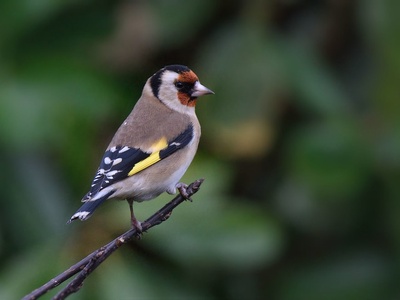
Goldfinch
A small, colourful finch with a bright red face, black and white head, and striking yellow wing bars. Often seen in flocks, called ‘charms’, feeding on seed heads with their fine beaks.
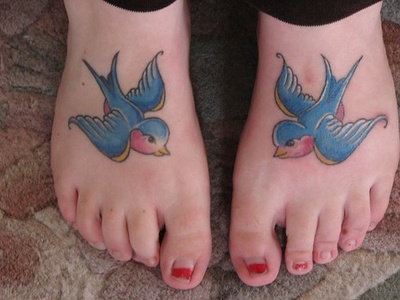
Swallow
A sleek, agile bird with glossy blue-black upperparts, a reddish throat, and long tail streamers. A classic sign of summer, they travel from Africa to breed, building mud nests on barns and sheds.
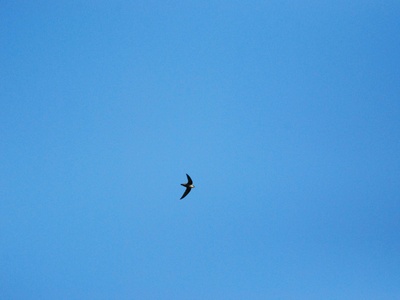
Swift
A dark, scythe-winged bird that spends almost its entire life in the air, even sleeping on the wing. They arrive in May and leave in August, their screaming calls a characteristic sound of summer evenings.
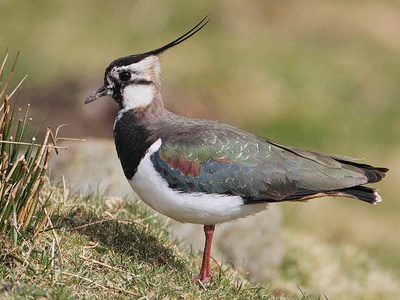
Lapwing
A striking black and white plover with an iridescent green sheen and a long, wispy crest. Known for its acrobatic, tumbling display flight and its distinctive ‘peewit’ call, from which it gets an old name.
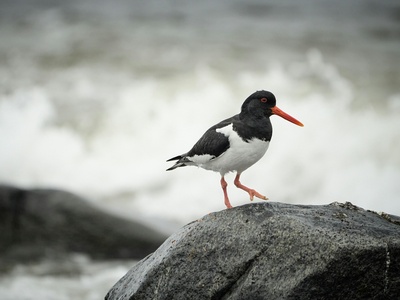
Oystercatcher
A large, noisy black and white wader with a long, bright orange-red bill, pink legs, and a piercing call. Despite its name, it mainly eats mussels, cockles, and worms, not just oysters.
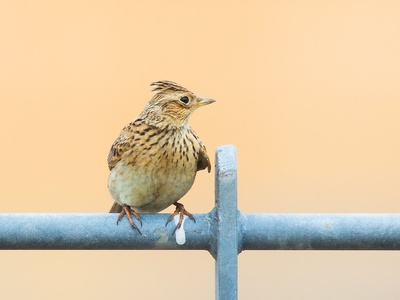
Skylark
A small, streaky brown bird, famous for its beautiful, sustained song flight. The male rises almost vertically, sometimes hundreds of feet high, pouring out a continuous stream of melodious notes.
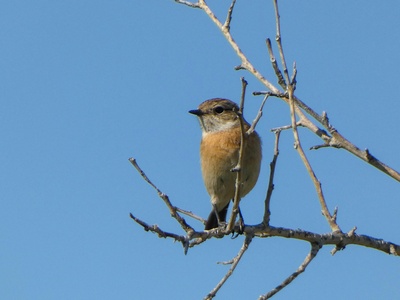
Stonechat
A small, robin-sized bird. The male has a black head, white collar, and orange-red breast. They have a distinctive, sharp call that sounds like two stones being tapped together.
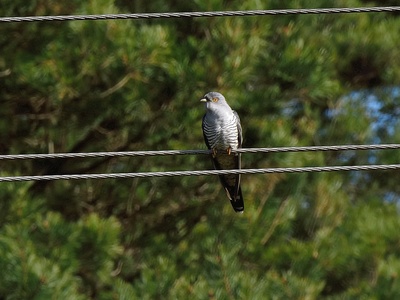
Cuckoo
A slim, grey bird resembling a hawk in flight. Famous for its ‘cuck-oo’ call and its behaviour as a ‘brood parasite’, laying its eggs in the nests of other birds, such as meadow pipits.
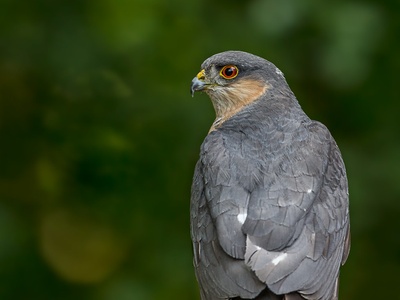
Sparrowhawk
A small, agile bird of prey specialised for hunting small birds in confined spaces. The male is small and slate-grey, while the female is larger and brown. Known for its lightning-fast surprise attacks.
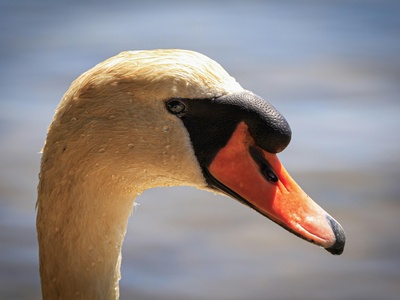
Mute Swan
A large, white waterbird with a long S-shaped neck and an orange bill with a prominent black knob. Despite the name ‘mute’, it makes various hissing and grunting sounds. It is highly territorial.
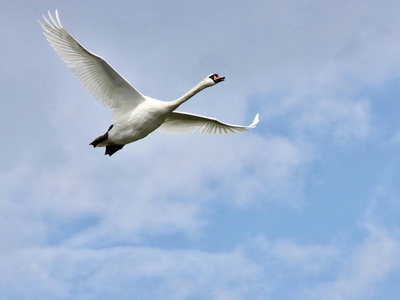
Whooper Swan
A large, migratory swan that flies from Iceland to winter in Northern Ireland. It has a yellow and black bill, holds its neck straight, and has a loud, whooping or bugle-like call.
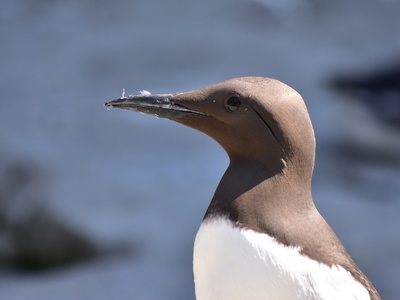
Guillemot
A seabird that looks like a small penguin, with dark brown/black upperparts and white underparts. They breed in huge, dense, and noisy colonies on narrow cliff ledges, a spectacular ‘seabird city’.
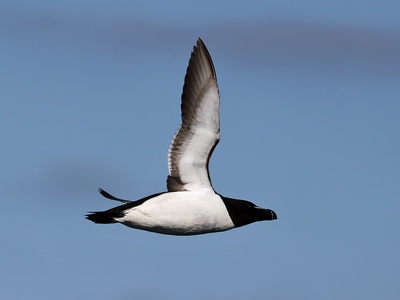
Razorbill
A medium-sized auk, black above and white below, with a thick, blunt, black bill crossed by a thin white line. It nests in smaller, less dense colonies than the guillemot, often in more sheltered spots.
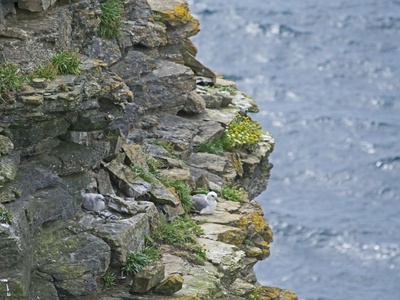
Fulmar
A gull-like seabird with stiff-winged, gliding flight. It has a prominent tube on its bill and can spit a foul-smelling oil at predators as a defence mechanism, which can mat their feathers.

Cormorant
A large, dark waterbird often seen standing on posts or rocks with its wings held out to dry. An expert diver, it pursues fish underwater. In the breeding season, it develops a white thigh patch.
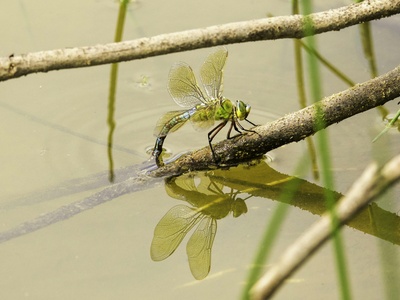
Emperor Dragonfly
One of the largest and most powerful dragonflies in the UK & Ireland. The male is bright blue with a central black stripe and is highly territorial, often seen patrolling constantly over water.
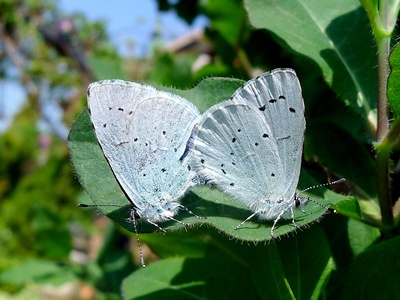
Holly Blue
A small, bright blue butterfly. The undersides are pale silvery-blue with tiny black specks, distinguishing it from the Common Blue. The first generation lays eggs on Holly, the second on Ivy.
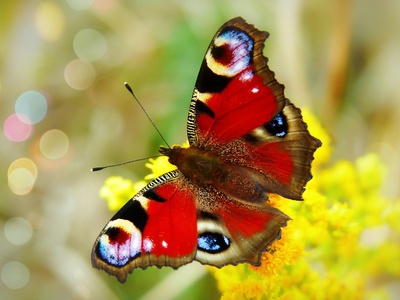
Peacock Butterfly
A large, reddish-brown butterfly with spectacular, intricate eyespots on each wing to startle predators. One of the first butterflies to be seen in spring, as it hibernates as an adult.
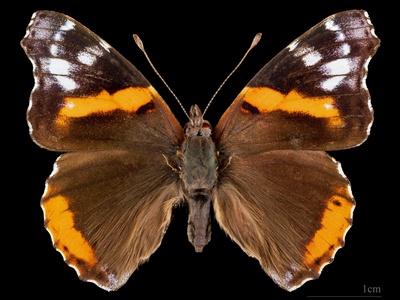
Red Admiral
A powerful, velvety-black butterfly with striking red bands and white spots. A regular migrant from Europe, it is increasingly overwintering successfully. Often seen feeding on nectar from buddleia or on rotting fruit.
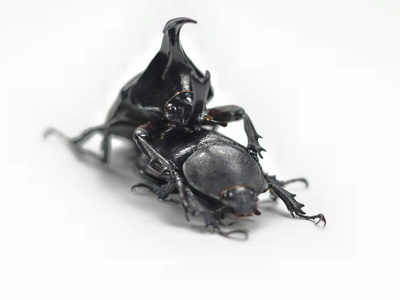
Devil’s Coach Horse Beetle
A large, black rove beetle known for its defensive posture: it raises its long, unarmed abdomen over its body like a scorpion’s tail and opens its powerful jaws. It is a nocturnal predator of invertebrates.
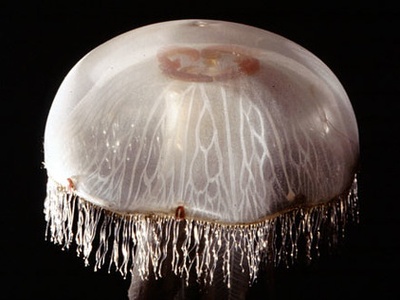
Common Jellyfish
A translucent jellyfish with four distinct purple-pink rings (its gonads) visible through the bell. Its sting is very mild and generally harmless to humans. They feed by trapping plankton in mucus.
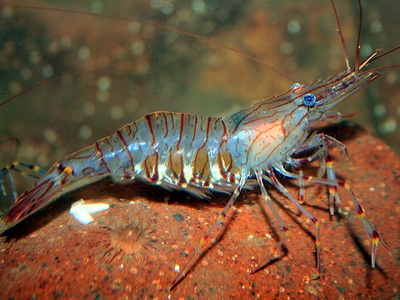
Common Prawn
A semi-transparent crustacean with visible internal organs and distinctive stripes. Often found in rockpools at low tide. They are active scavengers and can change colour to match their surroundings.
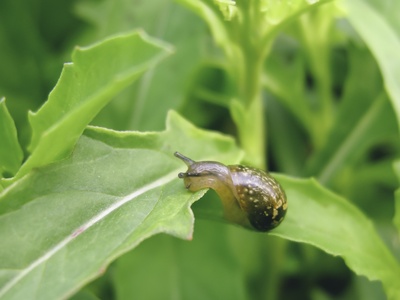
Garden Snail
A large, shelled gastropod mollusc, familiar to every gardener. It is nocturnal, feeding on a wide range of plants. It moves on a muscular ‘foot’ and leaves a characteristic silvery slime trail.
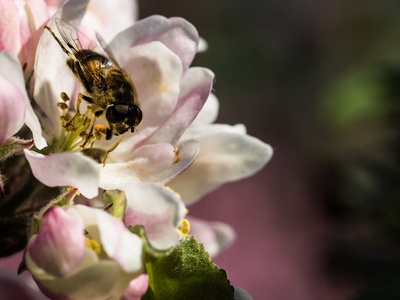
Irish Black Bee
The native honey bee of Ireland, adapted to the damp, cool climate. Darker and hardier than imported strains, it is the focus of conservation efforts to protect its unique genetic heritage.
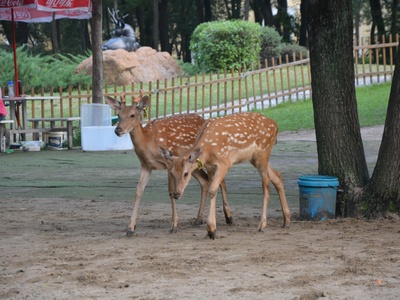
Sika Deer
A medium-sized deer, smaller than Red Deer, with a variable coat that is often spotted in summer. Sika stags have a piercing, high-pitched whistle during the autumn rut. Can hybridise with Red Deer.
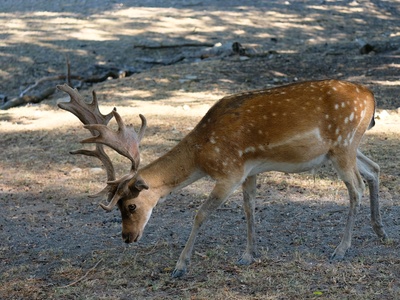
Fallow Deer
A medium-sized deer known for the bucks’ large, palmate (hand-shaped) antlers. Their coat is highly variable, but the most common is tan with white spots. They form herds and graze on grasses.
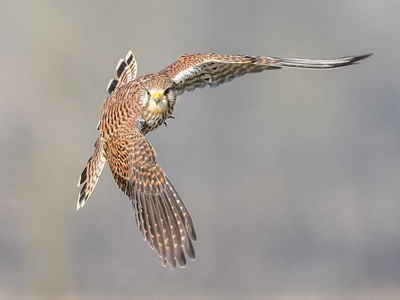
Kestrel
A small falcon famous for its ability to hover with a fanned tail while it scans the ground for small mammal prey like voles. Often seen hunting along road verges and motorways.
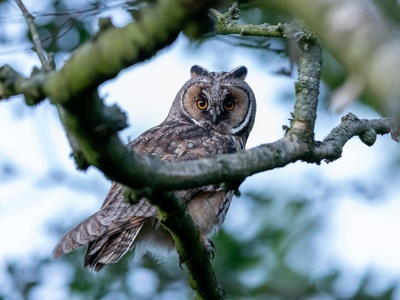
Long-eared Owl
A medium-sized, nocturnal owl with long ‘ear’ tufts (which are actually feathers for display), piercing orange eyes, and bark-like camouflage. Roosts communally in winter.
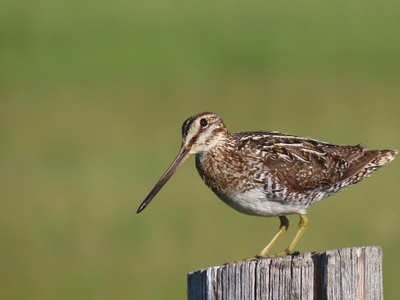
Snipe
A well-camouflaged wader with a very long, straight bill used to probe for invertebrates in soft mud. Famous for its ‘drumming’ or ‘bleating’ display flight, where vibrating tail feathers create a unique sound.
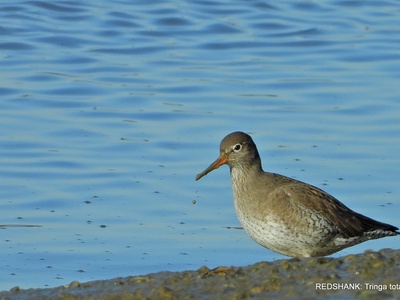
Redshank
A noisy wader with long, bright orange-red legs. Known as the ‘guardian of the marsh’ because its loud, piping alarm calls alert all other birds to danger.
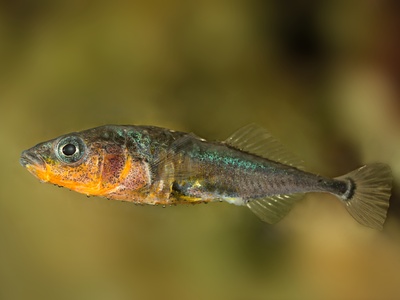
Three-spined Stickleback
A small, feisty fish with sharp spines on its back. The male is famous for his elaborate courtship behaviour: he builds a nest, develops a bright red throat, and performs a zigzag dance to attract a female.
